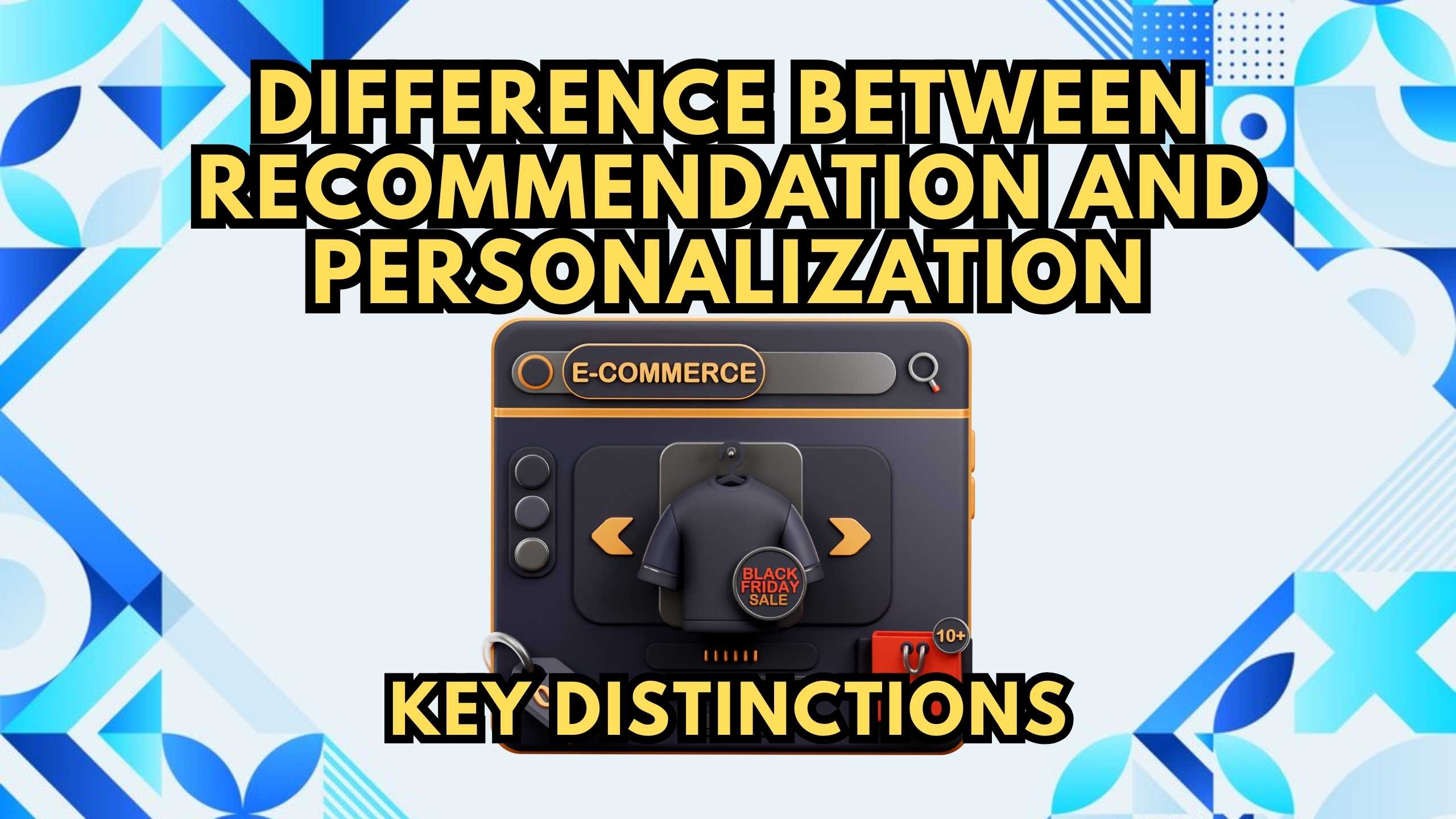Difference Between Recommendation and Personalization: Key Distinctions


Difference Between Recommendation and Personalization: Key Distinctions
Understanding the nuances between recommendation and personalization is crucial in today’s data-driven landscape. This blog explores the fundamental differences between recommendation and personalization, shedding light on their distinct roles, applications, and impacts on user experiences.
1. Recommendation Systems
Recommendation systems, exemplified by platforms like Netflix, leverage algorithms to suggest products or content based on user behavior and preferences. The primary goal is to guide users toward items they may find appealing but might not have discovered independently. Recommendations streamline decision-making, enhance user engagement, and contribute to a more satisfying user journey.
By implementing recommendation systems, businesses can significantly influence user choices, driving content consumption, product purchases, and overall satisfaction.
2. Personalization Strategies
Personalization, as seen on websites like Amazon, focuses on tailoring the entire user experience based on individual characteristics, behaviors, and preferences. It goes beyond suggesting specific items and extends to the customization of interfaces, content, and services. Personalization aims to create a unique and tailored journey for each user, fostering a sense of connection and understanding.
The significance of personalization lies in its ability to create a more immersive and relevant experience, ultimately strengthening user loyalty and satisfaction.
3. Content Recommendations vs. Tailored Experiences
A key distinction between recommendation and personalization is the scope of influence. Recommendation systems typically focus on specific content or product suggestions, such as those found on Spotify. In contrast, personalization encompasses a broader spectrum, influencing the entire user interface and interaction flow, as observed on platforms like Google.
Understanding this difference is essential for businesses aiming to implement strategies that align with their user engagement objectives.
4. Algorithmic vs. Rule-Based Approaches
Recommendation systems commonly employ algorithmic approaches, as demonstrated by YouTube, where machine learning algorithms analyze user data to suggest relevant videos. On the other hand, personalization may involve rule-based approaches, allowing for more explicit and predefined customization, as seen in the settings and preferences of Facebook.
The choice between algorithmic recommendation and rule-based personalization depends on the level of control and specificity desired by the platform.
5. Dynamic vs. Static Adaptations
Recommendation systems often provide dynamic suggestions that evolve based on real-time user interactions, a characteristic prominent in LinkedIn’s job recommendations. Personalization, however, may involve more static adaptations, where user preferences influence long-term settings and configurations, as observed on Microsoft.
Understanding the dynamic and static nature of these approaches is vital for businesses seeking to create adaptive and user-centric experiences.
Relevant SaaS Products:
- Netflix: Elevate user engagement with personalized content recommendations using Netflix’s advanced recommendation engine, setting a benchmark for tailored entertainment experiences.
- Amazon: Boost e-commerce sales and enhance user satisfaction by implementing Amazon’s personalized shopping experience, tailoring product suggestions and interface elements.
- Spotify: Keep users engaged with dynamic music recommendations powered by Spotify’s recommendation system, fostering a personalized and enjoyable auditory journey.
- YouTube: Enhance content discovery and user retention through YouTube’s algorithmic recommendation system, providing users with relevant video suggestions.
- LinkedIn: Improve user interaction and job discovery with LinkedIn’s dynamic job recommendations, showcasing the power of algorithmic suggestions in professional networking.
Conclusion
In conclusion, recognizing the key distinctions between recommendation and personalization is essential for businesses aiming to enhance user experiences. Whether guiding choices through algorithmic recommendations or tailoring entire experiences through personalization, each approach plays a unique role in shaping user interactions. As technology continues to evolve, businesses should strategically implement these concepts to stay ahead in the competitive landscape.
Elevate User Experiences with Subscribed.fyi!
Ready to transform your user experiences with cutting-edge SaaS tools? Subscribed.fyi offers exclusive deals on essential SaaS products. Sign up for free to unlock secret deals and access savings on recommendation and personalization tools and other valuable resources. Empower your user engagement strategies and stay at the forefront of personalized experiences with Subscribed.fyi.
Relevant Links:











